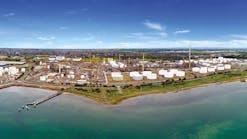The purpose of this course is to present an overview and fundamental understanding of the wide range of oilfield production handling and treatment equipment. The participant should learn not only "what" but "how" field fluid treating equipment works. The fundamental principles of fluid behavior are first introduced, then applied to all of the various equipment and systems comprising production operations. Emphasis is on understanding the internal workings inside the piping, valves and vessels. A major goal of this course is to improve communication among the technical disciplines, field and office in order to enhance operational efficiencies, lower costs and improve production economics. Example step-by-step exercises are worked together with the instructor to drive home the important points. Daily sessions include formal presentation interspersed with directed discussion and problem solving.
Beginning level production, operations, facilities and petroleum engineers; production managers and field production supervisors; surface equipment technicians; and technical or supervisory personnel who interact with field facility engineers / operators.
You will Learn:
- The physical properties and phase behavior of crude oil and natural gas that govern production operations
- Field processes for treating and conditioning full wellstream production for sales or final disposition
- An introduction to the wide range of equipment used to process, treat, transport, and store oilfield produced fluids
- The basics of oilfield corrosion prevention, detection and treatment
- How to determine and minimize pressure drop in pipelines, valves and pressured vessels
- Internal workings of separators, pumps, compressors, valves and other treating equipment
- An overview of the processes and equipment used to handle acid gases
- A basic understanding of a wide range of produced fluid volume measurement and metering devices
- A description of treating equipment whether located downhole, on the surface, offshore platform or sea floor
Course Content:
- Properties of produced fluids: Impact of pressure, temperature and fluid on key hydrocarbon parameters and fluid behavior
- Valves: API valves, chokes, regulators, and flow control devices; principle of operation and effect on fluid condition
- Safety systems: surface safety control systems; relief valves; pressure ratings; API recommended practices
- Flowlines, manifolds and gathering systems: material selection, pressure drop considerations, line sizing, corrosion, noise and erosion concerns, full wellstream production, two and three phase fluid flow, pigging, slugs, foam and emulsions
- Mechanical equipment: Pumps, compressors, heaters, sour and acid gas treating, pressured vessels, storage facilities and other surface and subsurface treating/fluid handling equipment
- Gas separation / treating: two and three phase separation, free water removal, treatment of emulsions, hydrate prevention and treatment, vapor recovery, gas conditioning for sales, injection or field usage
- Oil / water separation and treatment: two and three phase separation, emulsion breaking, asphaltenes, solids control, removal of residual oil-in-water and water-in-oil to meet pipeline specifications or injection / disposal requirements, hydrocyclones and new water / oil treating equipment
- Fluid measurement and instrumentation: Liquid and gas metering using positive displacement meters, orifices, sonic meters, mass measurement meters, three phase flow measurement and new metering devices
- Acid gas treatment: field handling and treatment of sour and acid gases, safety considerations, API standards
- Corrosion: fundamental principles; detection, prevention and treatment
- Treating facility innovations: up-to-date description of new equipment for handling high pressure/temperature, three phase flow from subsea and remote locations



